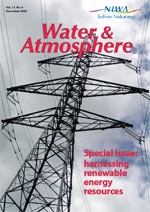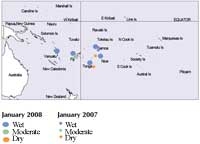PDF of this article (128 KB)


Energy drives the New Zealand economy and supports our standard of living. Our economic growth has, in part, been fuelled by our access to energy, both for production and transport. Since the 1980s we have benefited from having competitively priced energy based on the ready availability of hydro power and Maui gas, and access to imported transport fuels. Increasingly, there is more pressure on these supplies. While there is still a significant hydro resource available, little additional capacity is on the horizon. Although other smaller gas fields are being brought online, the Maui gas field is nearing the end of its productive life, and there is a consensus that global oil production will peak this century and supplies will become increasingly volatile. These forces drive a need for more indigenous energy production. In addition, the contribution of greenhouse gas emissions to global climate change has spurred calls for a greater emphasis on non-fossil fuels.
If we are to continue to grow as a nation and maintain our lifestyle, we need to find and harness new energy resources and find better ways of using them. Better usage applies to managing demand, increasing energy efficiency, and applying our energy to the most productive end. For a sustainable future, we need to continually increase the sustainable component of our energy supply, both to limit emissions of greenhouse gases and to reduce our dependence on overseas energy sources. Although our electricity supply has a significant renewable component (about 70%), with the projected need for an additional 150 megawatts per year, there is pressure to understand the resources and harness more renewable supplies.
Many renewable energy resources are driven ultimately by the sun and locally by the weather; in fact, some are our weather. This goes for solar, wind, wave, and hydro (rain) as energy resources. They fluctuate on the short timescale of weather (important for operational purposes) and the longer timescale of climate (important for planning purposes), so any assessment of these renewable resources must consider their availability (that is, their magnitude and variability) and how this can be integrated into the New Zealand system.
NIWA is committed to the sustainable use of these water and atmospheric resources, undertaking research on the resources, implementations to harness them, and possible effects on the environment. Considering the spectrum of renewables allows a balanced approach to energy resources, matching likely solutions to current (hydro and wind) and future (wave and tide) technology and needs.
The articles to follow outline some of the energy research and assistance with implementation provided by NIWA. This work provides a framework for finding better ways to harness and use our energy resources.
Murray Poulter General Manager, Atmosphere Guest Editor [email protected]
